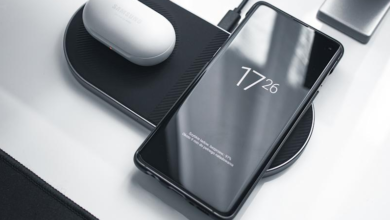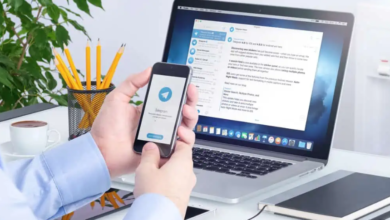
Enhancing Engagement in Meetings with Innovative Digital Signage Displays
As workplaces continue to evolve because of digitalization, the need to innovate within the meeting spaces or rooms is ever-growing. Perhaps the most efficient improvement in this regard is in the use of meeting room digital signage. This technology optimizes business communications and room over-allocation, improving organizational efficiency by providing immersive and interactive collaboration spaces.
Understanding the significance of digital signage in meeting rooms is vital for B2B companies focused on optimizing their internal processes or providing services to enterprise customers. It’s interesting to note that the same grocery store price labels and wholesale price tags logic of transparency, instant update, and precision, works in business environments too. Let’s take a look.
Advancements in Communiculative Technology in Meeting Rooms
Meeting rooms used to be equipped with a table, some chairs, and a whiteboard along with a projector. The contemporary office is equipped with all imaginable tools for the employees. Clear, consistent systems for room reservation and communication tools, along with multifunctional all-in-one devices are essential for the modern office.
Meeting room digital signage systems provide up-to-date and real-time information and data at the room and at the entrance. Such digital signs display room occupancy and schedules along with the names of the participants and synchronize with calendar systems such as Outlook or Google Calendar. This enables a singular experience for all stakeholders including employees and visitors alongside proficiencies like facilities management and IT.
IoT Data Stream for Increasing Productivity
As with wholesale price tags, the system calls for real-time updates of digital signage within meeting rooms to be in tandem with other systems and devices.
Overview of Meeting Schedules
Offices that have a lot of meeting rooms stand to gain the most and therefore benefit a lot from digital signage as an aided display of schedules for all meeting rooms. Since double booking is now a thing of the past, employees in large enterprises can now use the time and resources to improve productivity as they can be routed to their designated departments without a hassle.
Distributed System Control
With every digital signage system added, all interfaces can be managed from a master console, with the possibility for facility managers or IT to perform updates, resets and system check-ups. This promotes the continuity of information being communicated irrespective of the distance between the wires or the remoteness of the physical offices.
Integration with Workplace Platforms
The full potential of meeting room signage comes to fruition when used alongside other digital systems. Internal booking systems and external calendar systems are seamlessly integrated with meeting room signage. Some systems are even automated, such as IoT sensors that detect someone’s presence in the room and automatically update the room’s occupancy status.
Creating a Visually Cohesive and Brand-Aligned Space
Visual elements are just as crucial as technology, as both factors work in unison to elevate the experience offered in a meeting room. Companies can showcase welcoming branded visuals or even live data feeds with the flexibility provided by digital signage.
Professional First Impressions
Digitized branding elements can create a professional first impression to clients or business partners. Tailorable logos, thematic graphics, and customizable welcome screens help users to seamlessly reinforce brand identity and polished atmosphere.
Dynamic Content Capabilities
Asides from providing live feeds, displays can now showcase news, weather, motivational quotes, and even the day’s schedule. The ability to showcase dynamic information helps to keep the workplace engaging.
Read Also: Tailored CNC Milling Services For Precision Prototyping In Low Volumes
Assisting Hybrid and Agile Work Models
In this new era of hybrid work, the conference room is used more for strategic use than ever before. With the new ways of working, digital signage is used to allow for clear, clear, as well as a dynamically adjustable scheduling process.
Dynamic Room Booking
Staff can now make ad-hoc appointments for rooms through mobile applications, PCs, or physically through monitors mounted outside the rooms. Empowering the users to tailor their selection of the meeting room to their needs.
Attendance and Room Use Monitoring
With the analytics tools embedded into the signage tools, businesses can gain more insights into the rooms used such as how many times rooms are used, who is using the rooms, and the popular rooms as well as the inefficient rooms. Such insights are important in changing the office designs or in adjusting scoped resources.
Seamless Support for Remote Team Alignment
Flexible signage systems provide the integration for remote participance, including VTC and remote participation detail display, thus hybrid-compatibility is maintained for the in-person and remote participance collaboration gap.
Things from the Retail: Nutrition Facts, Pricing, And Their Management
In the context of integration of meeting room digital signage with retail marking, like grocery store price labels and wholesale price tags, there is a striking intersection. In both cases, the core goals are the same: reliable and straightforward graphic communication of important information.
Digital Signage as a Utility
In grocery retail, dynamic pricing occurs through digital shelf labels, which adjust prices in real-time based on promotions and stock levels. In corporate settings, meeting room signage updates and reflects scheduled meetings, cancelations, delays, and ad-hoc bookings.
Enhancing User Experience
In retail, directional signage aids optimal customer flow. Digital meeting signage works similarly by alleviating workplace friction by eliminating uncertainty and minimizing time-wasting.
Real-Time Responsiveness
In both scenarios, real-time data delivery provides unique advantages. Whether it’s price updates in retail or busy schedules in a corporate office, real-time responsiveness adds agility and operational clarity.
Conclusion: Empowering Smart, Connected Workspaces
As companies try to increase productivity and optimize the use of physical office space, this expands the field of meeting room digital signage as it improves scheduling accuracy.
Branded as an intelligent tool, it supports hybrid models, enhances shifting work rhythms, consolidates brand-centered workspace ecosystems, and provides rich analytics on workspace usage.
For this, it becomes a new field of opportunity with enormous potential for B2B vendors, as for hardware, and software developers and IT integrators. Seamless workplace experience comes when businesses use retail-winning strategies, like wholesale price tags, to intelligently orchestrate digital and physical retail solutions.
Integrating digital displays into meeting rooms is not simply a technological update; it is a calculated step towards a more intelligent and interconnected future.



